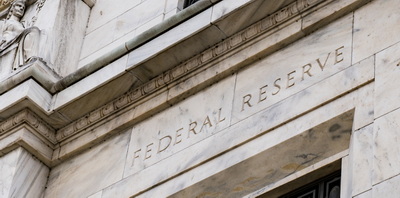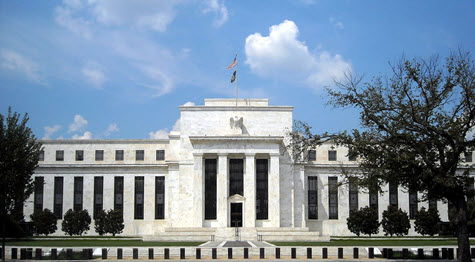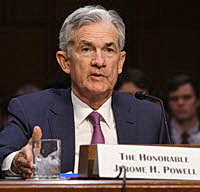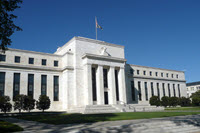Federal Reserve Chairman Jerome Powell told House and Senate policymakers this week that economic support for workers and businesses adversely affected by COVID-19 should continue, adding that until COVID-19 is fully contained, “a full recovery is unlikely.”
- Powell testified remotely on June 16 before the Senate Banking Committee and on June 17 before the House Financial Services Committee to deliver his Semiannual Monetary Policy Report to Congress.
- “It would be wise to look at ways to continue to support people who are out of work and also smaller businesses that may not have vast resources for a period of time…so that we can get through this critical phase,” Powell said. “That support would be well placed at this time.” (Wall Street Journal, June 17 and 18)
- The Fed Chairman acknowledged some economic indicators have suggested “a modest rebound.” He also cautioned, “That said, the levels of output and employment remain far below their pre-pandemic levels, and significant uncertainty remains about the timing and strength of the recovery.” (BGov, June 17 and Marketwatch, June 18)
- During his two days of congressional testimony, Powell defended the Fed’s aggressive purchases of assets and corporate bonds. “I don’t see us as wanting to run through the bond market like an elephant, doing things and snuffing out price signals,” he said. “We just want to be there if things turn bad in the economy.” (Bloomberg, June 16)
- Powell delivered his remarks to Congress after stating last week that the central bank will continue buying large quantities of bonds and leave interest rates near zero through at least 2022.” (USA Today, June 10)
- The Fed Chairman also warned that the economic downturn could widen inequalities between rich and poor. “Low-income households have experienced, by far, the sharpest drop in employment, while job losses of African-Americans, Hispanics and women have been greater than that of other groups,” Mr. Powell said. “If not contained and reversed, the downturn could further widen gaps in economic well-being that the long expansion had made some progress in closing.” (New York Times, June 16)
Former Federal Reserve Chairs Ben Bernanke and Janet Yellen signed a June 16 letter to congressional leaders, endorsed by more than 150 economic scholars, stating, “Congress must pass another economic recovery package before most of the support in the CARES Act expires this summer. Congress should address this risk, and the already occurring economic damage, by passing, as soon as possible, a multifaceted relief bill of a magnitude commensurate with the challenges our economy faces.” (Washington Center for Equitable Growth, June 16 statement)
Main Street Lending Program Launches
The Real Estate Roundtable and Nareit on April 22 wrote to Treasury Secretary Steven Mnuchin and Federal Reserve Chairman Jerome Powell urging that additional measures be adopted to expand the scope of the Main Street Lending Programs (MSLP) to forestall further disruption and economic dislocations in the commercial real estate sector during the pandemic. (MSLP letter, April 22)
- On June 8, The Federal Reserve Board expanded its MSLP to allow more small and medium-sized businesses to be able to receive support. (Roundtable Weekly, June 12)
- This week, the Federal Reserve’s MSLP opened for lender registration. The Federal Reserve Bank of Boston announced on June 15 that lenders can find the necessary registration documents and are encouraged to begin making Main Street program loans immediately. (News Release)
- The program offers five-year loans with floating rates, with principal payments deferred for two years and interest payments deferred for one year. The loans range in size from $250,000 to $300 million to support a broad set of businesses.
The MSLP intends to purchase 95% of each eligible loan that is submitted to the program after meeting all requirements. The Program will also accept loans that were originated under the previously announced terms, if funded before June 10, 2020.
Regulators Support Financing to Non-Bank Lenders
Federal banking regulators responded favorably this month to a request from a business coalition, including The Real Estate Roundtable, that requested clarifications about financial institutions working with borrowers impacted by COVID-19. (Regulators April 7 guidance—Interagency Statement on Loan Modifications and Reporting for Financial Institutions Working with Customers Affected by the Coronavirus.)
- The coalition on May 15 wrote to the regulators requesting clarification that – in addition to traditional loan products – lending and financing arrangements, such as warehouse lines and repurchase agreements secured by multifamily and commercial real estate loans and commercial mortgage-related securities, are within the scope of the guidance. (Coalition May 15 letter)
- The coalition’s focus was the debt financing extended by commercial banking institutions to non-bank lenders (NBLs) who, in turn, provide mortgage loan funding to commercial and multifamily property owners of all types. The coalition received two affirmative replies, from Acting Comptroller of the Currency (OCC) Brian P. Brooks on June 4 – and on June 18 from Federal Deposit Insurance Corporation (FDIC) Chairman Jelena McWilliams.
The Roundtable’s Real Estate Capital Policy Advisory Committee (RECPAC) continues to work to address the current crisis, pursuing measures that will enhance liquidity and capital formation, and to help develop an effective insurance program that provides the economy with the coverage it needs to address future pandemics.
# # #






